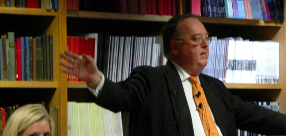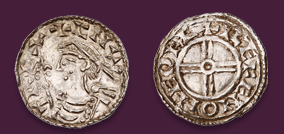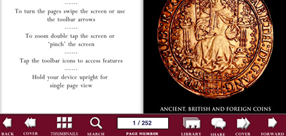
Auction: 11010 - Orders, Decorations, Campaign Medals & Militaria
Lot: 7
A Good Boer War D.S.O. Group of Five to Major A.V.L. Wood, 5th Lancers, Who Distinguished Himself at Elandslaagte, 21.10.1899, and Was Subsequently Twice Mentioned in Despatches a) Distinguished Service Order, V.R., silver-gilt and enamel, with integral top riband bar b) Queen´s South Africa 1899-1902, five clasps, Cape Colony, Elandslaagte, Defence of Ladysmith, Orange Free State, Belfast, top lugs removed, lacking one rivet (Lieut. A.V.L. Wood. 5/Lcrs.) c) King´s South Africa 1901-02, two clasps (Capt. A.V.L. Wood. D.S.O. 5/Lcrs.) d) British War and Victory Medals (Major A.V.L. Wood.), minor edge bruise to BWM, toned, good very fine, with the following related items: - The recipient´s miniature awards, riband bar, and cap badge, in fitted case designed for the Boer War awards - The recipient´s diary from the Boer War - The recipient´s County Borough of Dublin driving licence - Various group and individual portrait photographs of the recipient (5) Estimate £ 2,800-3,200 D.S.O. London Gazette 27.9.1901 Captain Alexander Vaughan Leipzic Wood, 5th Lancers ´In recognition of services during the operations in South Africa.´ Major Alexander Vaughan Leipzic Wood, D.S.O., was born at Glasbury-on-Wye, Breconshire, in September 1867, the second son of Captain C.H. Wood, and was Commissioned Ensign in the 5th Lancers in October 1888. He was promoted Lieutenant in September 1890, and served as Aide-de-Camp to the General Officer Commanding at Shorncliffe from March 1895 to May 1898. In 1899 he proceeded with his Regiment to South Africa, and was there when War was declared. Present at the operations in Natal, his first major action was at Elandslaagte, on the 21st October 1899. Elandslaagte ´The previous day General French had taken the Cavalry out for reconnaissance in the direction of Modder Spruit, when about six miles from Elandslaagte we came in touch with the enemy´s patrols. C Squadron was sent further forward and captured six Boers in a farmhouse; nothing further was done and we returned to our bivouac by the river. The next morning General French had out the Artillery and Cavalry Brigade, and on arriving at Modder Spruit we learnt from the Imperial Light Horse who had been out at daybreak that the enemy were in the vicinity of Elandslaagte station, and that the Natal Volunteer Artillery who were also out had shelled the station and then had to retire as the Boer Artillery opened fire on them and were making it too hot at a range which their guns could not be touched by the Natal Volunteer Artillery. General French held a consultation with his staff and decided on attacking the Boer position, having previously sent in by field telegram for reinforcements which came out by train. Previous to this I had been sent out to reconnoitre our left flank, and on returning found that the troops were deploying to attack the position, D Squadron 5th Lancers being on the right flank with the Imperial Light Horse. In rejoining my Squadron [D Squadron] I came across a detached troop and whilst advancing got under a hot fire, but we eventually came up with the Squadron. The Infantry then deployed and the Artillery moved up to a closer range, with Boer guns shelling us all the time. About 4:00pm the attack on the hill began- D Squadron 5th Lancers being on the flank to protect the guns did not come under a hot fire as we were sheltered under the lee of a small kop on which the Boers were- their bullets kept streaming over our heads. The Imperial Light Horse were with us but more men being required in the firing line Colonel Scott-Chisholme came up and dismounted his men to assist the Gordons and Devons in the final assault on the Boer position- this was the last we saw of our dear little Colonel as after gallantly leading his men, who together with the Gordons gallantly stormed the position under a fearful fire, he was shot dead on the top. The noise of the rifle fire was tremendous and it was only darkness coming on that put a stop to the fight. We gradually made our way back to the railway- the night was very dark and no one got orders or knew where we were. With a heavy rain and cold wind blowing we were soon wet through, and we all laid down on the veldt near the railway line and rested till daybreak when we got orders to escort the guns back to Ladysmith, arriving there on Sunday morning about 10:00am. The result of the Battle was a decisive victory for General French´s force- and the Boers were full of admiration of the pluck of the British soldiers, saying the shooting of the British Artillery was magnificent.´ (recipient´s diary refers). After the Battle of Elandslaagte Wood continued to serve with the 5th Lancers, and was present at the actions of Rietfontein and Lombard´s Kop; the Defence of Ladysmith, including the sortie of 7.12.1899 and the action of 6.1.1900; operations in the Transvaal, including the actions at Belfast, 26-27.8.1900, and Lydenberg, 5-8.9.1900; and subsequent operations in the Orange River Colony and Cape Colony. Appointed Brigade Signalling Officer on the 23rd March, 1900, and promoted Captain on the 16th June 1900; Wood was twice Mentioned in Despatches (London Gazettes 8.2.1901 Lieutenant A. V. L. Wood- ´very good at reconnoitring´ and 10.9.1901) and appointed a Companion of the Distinguished Service Order, being invested by the King on the 18th December 1902. After the War he served as Adjutant of the Militia, from June 1902 to August 1905, and was promoted Major, 5th Lancers, on the 19th October 1905. He retired in 1909, but was recalled on the outbreak of the Great War in August 1914, and subsequently served in Ireland, France, Belgium, and Germany, and later with remounts in England. Major Wood married Marjorie Florence Makins in 1909, and they had one son, Basil Alexander Charles Wood. For the medals awarded to Group Captain B.A.C. Wood see Lot 14.
Sold for
£4,000




